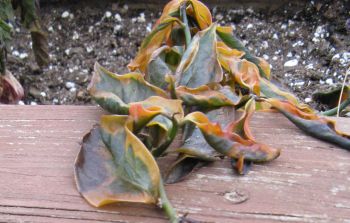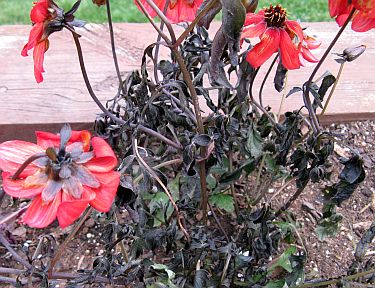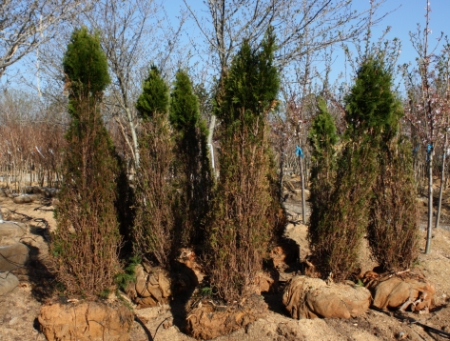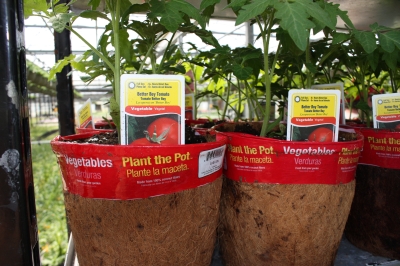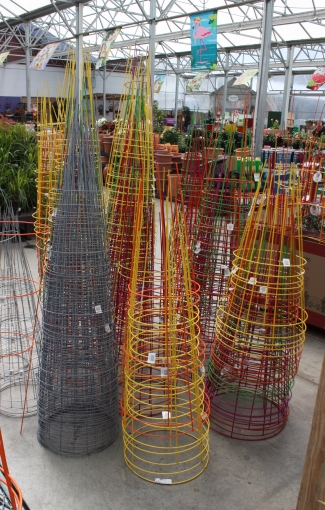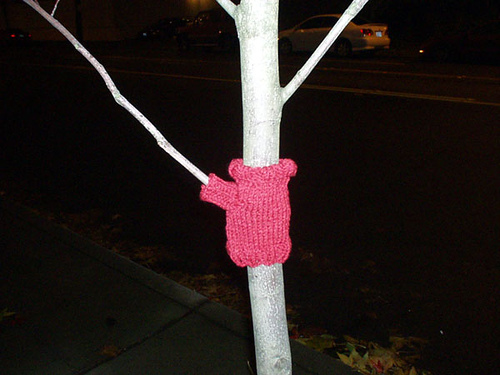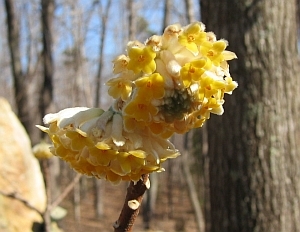Mulch is always an interesting point of discussion as well as the topic of several past GP posts. But I honestly can’t recall if we’ve covered dyed mulch, and can’t search the site, so here goes.
I recently received a request for information from Debbie Dillon, a fine Urban Horticulturist with Virginia Cooperative Extension. She noted the increased use of dyed mulch in the Northern Virginia area, and has been fielding questions from both landscape designers and homeowners regarding the safety of said mulch and the potential for harmful effects on plants. Black seems to be a fave color of late.
All I could offer her at the time was “Bleccch, I really don’t care for it” and a promise to investigate further. Armed with a bit of spare time and Google – here’s what [little] I’ve found out.
There are several products out there, such as Solarfast MCH and Mulch Magic. They’re used commercially on bulk mulch and are also available to the homeowner without restriction. From the Solarfast website – “Solarfast MCH is a colorant used to restore faded mulch back to its original color. It is environmentally friendly and does not contain hazardous chemicals, heavy metals or other ingredients that are known to be harmful to the environment.”
Is it safe?
The MSDS (Material Safety Data Sheet) for Solarfast was incomplete – it did not list components. The MSDS for Mulch Magic indicates the black contains carbon black, red contains iron oxide, and brown contains diethylene glycol monobutyl ether (as well as carbon black and iron oxide). The composition beyond that (carriers, surfactants, etc.), was not noted. Diethylene glycol monobutyl ether is a fairly common solvent for paints and inks with purportedly low environmental toxicity, but can irritate skin and eyes. Carbon black can be made from various sources but is basically a petroleum product, used in laser printer and photocopier toner as well as the manufacture of reinforced rubber (i.e. tires). Most concerns are related to worker inhalation at the point of manufacture. Iron oxide is, well, oxidized iron, and has been used as a pigment for quite a while (i.e. cave paintings at Lascaux, Bob Ross, etc.).
What about the plants?
There are many, many studies on pigmented film mulches (usually polyethylene) in fruit and vegetable production. Certain colors can alter plant growth and processes, such as flowering and fruiting, stem length, etc., but I couldn’t find a thing regarding dyed, wood-product mulch. Issues of concern might be that the dye is disguising the composition of the mulch. Apparently dyes are frequently used on “pallet mulch” – shredded pallets, usually made from softwood. Another concern might be the increase in root-zone temperature, especially from the use of heat-absorbing black pigments. Could soil temperatures warm to the point of causing a too-early bud break?
Is it aesthetically pleasing?
Apparently “yes”, to some, because there’s a market for it. What do you think?

This photo was taken in April at a local medical center (it was a rainy morning, pardon the low light). The fairly typical commercial landscape surrounding the building is dotted with beds and trees freshly mulched in black. Note the classic mulch “volcano” in the background. No sir, I don’t like it. But that’s just me.
Toxicity information on compounds noted available at the International Agency for Research on Cancer (IARC) – Summaries & Evaluations, http://www.inchem.org/



